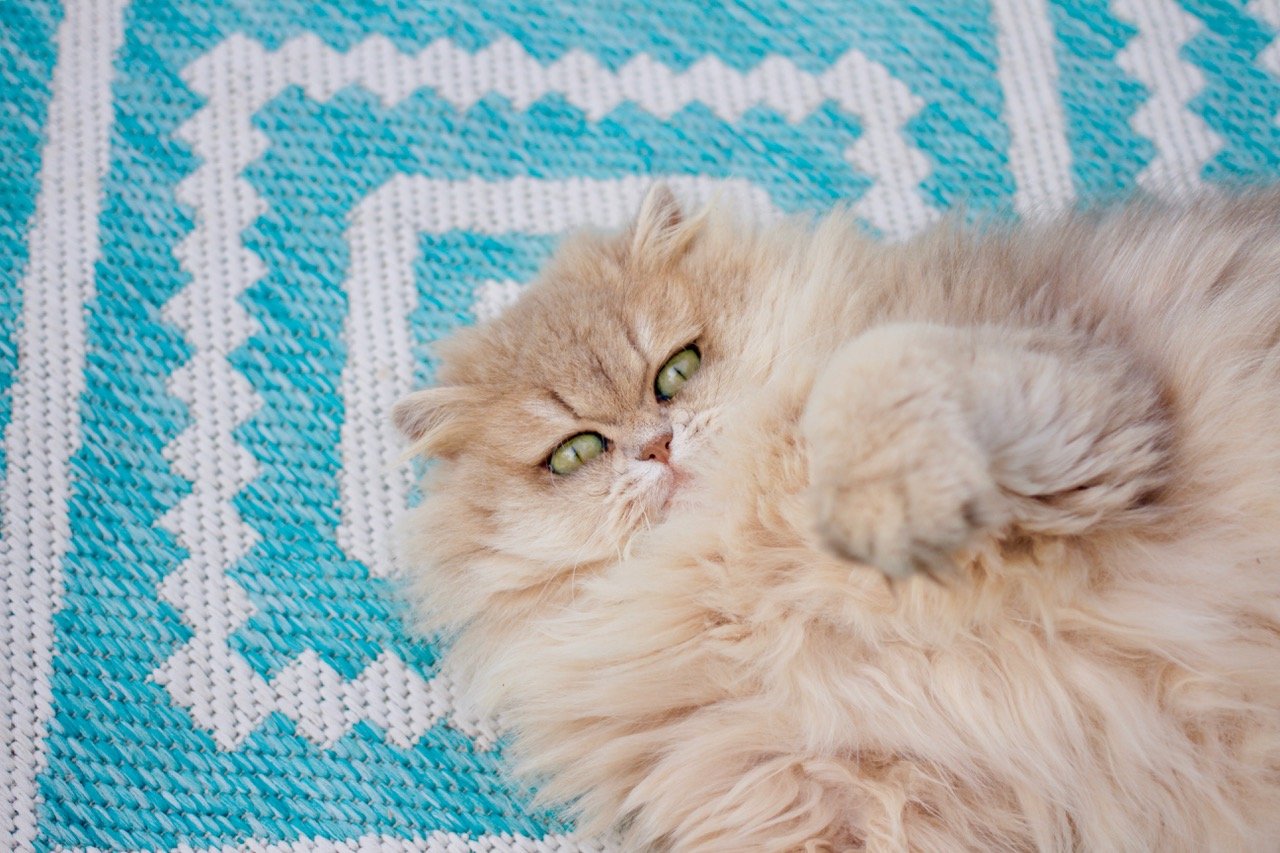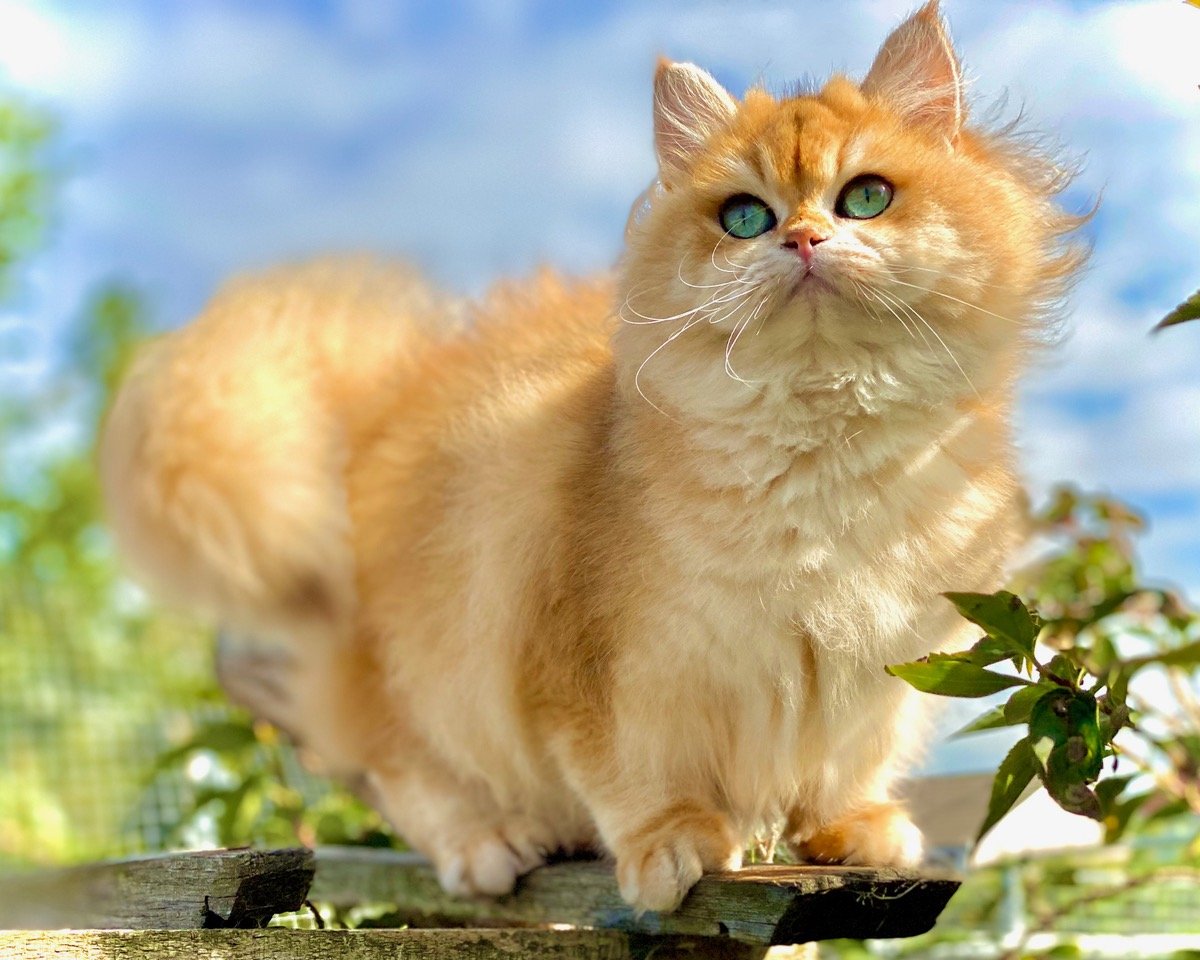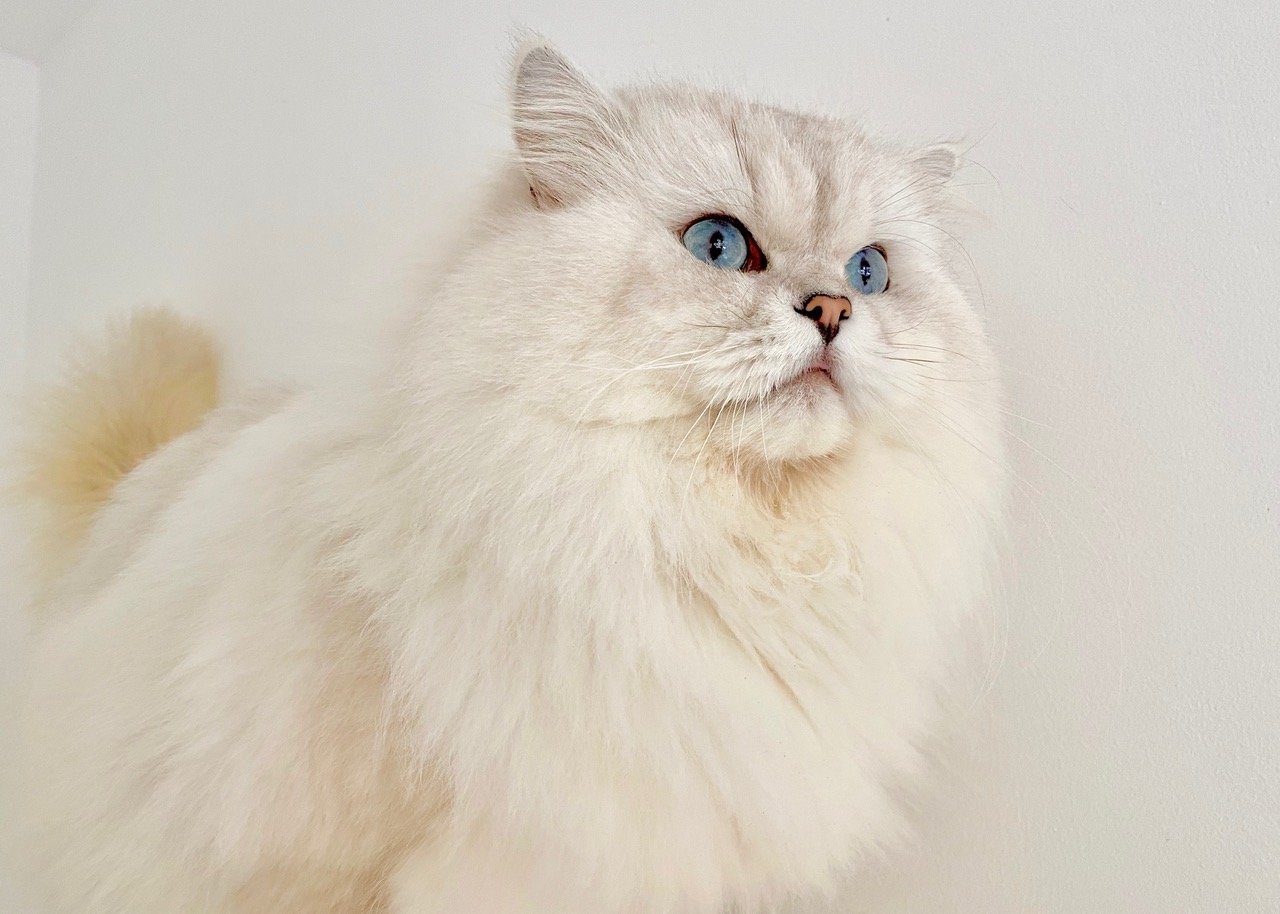The British Longhair Cat
The British Longhair has the same features as the British Shorthair as they are closely related and share a common history. The semi-long hair coat resulted from the outcrossing of the British Shorthair with the Turkish Angora and later the Persian cats.
One of the Oldest Photos of a Cat dated between 1880-1890.
Looks like a British Longhair Cat!
The Naming of the Breed
The breed originated in the UK, it has become increasingly popular around the world and as such is being known under different names in some organisations. In most of Europe, it is known as the Britannica, Highlander and the British Longhair. In the USA as the Highlander and the Lowlander in the Netherlands and some parts of the USA. However, the Highlander is also used for a Bobbed-tail and curled ears breed being developed in the USA, causing some confusion around the name.
Appearance
HEAD
Sharing the same standard as the British Shorthair cat, the head is rounded with strong well-rounded jowls and cheeks, rendering a broad jawline with a level bite. The nose and muzzle is short and broad with a semi-long indentation between the eyes. The eyes are large and round with a wide-open expression, not too closely set together. Like a chubby teddy bear, the ears are small, nicely rounded at the tips and widely set apart.
THE BODY
The body is muscular with a solid neck and frame. Legs are mid-length stubby – with well-rounded large paws. Proportional to the body in size and the chest the shoulders are strong, broad and muscular.
The back is straight, firm and the tail is fairly short and it should be shorter than the body.
Coat Colours and Patterns
The British Longhair's coat is extremely thick, plush and semi-long, with a dense undercoat it crowns the body and sits proudly with males having an impressive ruff. The texture may vary between the different colours. Paws have thick fluffy tuffs and the tail hair is wide and very dense.
The colour and range of patterns are one of the most expansive of any breed with over 300 different types, with a variety of mono-colours and multicolours including white, black, blue, red, cream, chocolate lilac, tortie, cinnamon and fawn, with these colours in silver and golden shaded cats.
There are a variety of pattern from Tipped, Ticked, Chinchilla, Colourpoint, Solid, Tabby, Tortoiseshell, Tobie, Bicolour and Smoke.
Character and Temperament
The British Longhair cats have captured many people’s hearts, with their beautiful gentile nature, affection, devotion and curiosity. Their implicit trust and gentle disposition make them the perfect companion.
While they are laid back leading a sedentary lifestyle and like their own space they are also very intelligent and are driven towards human affection and seek out attention. They are known for the cuddling up to people, following them around the house and checking that everything is as it should be. Their intelligent and curious nature makes them check on whatever the ‘human’ in its life is doing. Giving words of encouragement and inquisitive meows of approval – or in some instances indicating that the food should be served. The British Longhairs are a docile breed that is not disposed to race around excerting too much energy, nor are they the most willing of climbers – while a tree is interesting to explore on occasions – it requires an inordinate amount of energy and in accordance with the British Longhair, everything should be easily attainable – if not it’s not worth pursuing.
They promenade gracefully and as kittens, they scurry around playfully, some are especially drawn to water and we had one cat who loved to go out in the rain. Over the years we have found that our lines enjoyed being picked up and carried around the house like little extensions to our arms. They would come and meow to be picked up, held and cuddled, enjoying the verbal and physical attention – gazing up into our eyes, relaxed and purring with a reassuring approval.
Unneutered males will often mark their territory, and this is common amongst most unneutered males, they will scratch and leave their scent – while neutered males will settle down to a normal domesticated cat routine and a scratching post will suffice as a tool for exerting himself.
Grooming and Care
The Highlander is an easy-going cat as a breed they like to be brushed and groomed. While they are good at grooming their own coat to keep it clean, it tends to get knotted and matted especially if they have access outside to wet weather conditions.
They do not need to be excessively groomed but once a week is advisable to keep on top of little nodules of knots which then felt together into tight large and hard mats along the body - ours jump on the table when we start grooming and sit around waiting for a tickle of a comb or brush. For happy groomed cats, starting young and making it relax like a mother would groom her kitten, turns it into bonding time.
Their coat should be combed regularity to get rid of old and dead hairs, the dense undercoat often needs combing out. Then a soft brush to smooth over and it acts like the tongue of a cat grooming, making an enjoyable experience for the cat.
We strongly advise that knots or matted fur should be clipped away (buy a rechargeable small clipper) NOT cut away with scissors - as often the skin is too close to the fur and in cats, their skin is extremely thin. Special attention should be made between the four-leg flanks.
The Angora type coats are disposed to matting like felt – if they are not "show cats", we would recommend that they are clipped underbelly during autumn and winter months when their coats are fuller, this thins out the fur, it also prevents when they are moulting for the hair to be left on most surfaces and clothing.
In a grooming kit, we would recommend a metal comb, a soft hogs hair brush, hand glove, a slicker brush, a furminator, scissors and longhair cat clippers.
History
The British Longhair originated in the United Kingdom from British Shorthair and Persian cats, one of the Oldest Photos of a Cat - Looks like a British Longhair, identified to be taken between 1880-1890.
The British Shorthair breed was established in the 1800s in the UK and the breed grew in popularity but after WWI it went into decline and to maintain the breed they were outcrossed to Persian cats. The Longhair kittens that resembled the Persian and Angoras went into the Persian breeding programs and the shorthair kittens remained with the British Shorthair. The long hair gene was introduced and with yet another setback post-WWII, the British Shorthair was outcrossed back with the Persian lines to stabilise the breed and we still can see the Persian PER code in some current pedigrees 3-5 generations back. The Angora and Persian longhair gene are now firmly rooted within the British Shorthair Breed and many British Shorthair breeders today are trying to breed the longhair gene back out.
Historically, failing to meet Breed Standards across different Clubs around the world the longhair kittens that appeared would be excluded from the British Shorthair breed and seen as the unwanted by-product of the British Shorthair breed, so breeders would not openly advertise them. Resulting in a type of longhaired cat with all the qualities of a pure breed cat, but with no recognition or standard, therefore, it is not surprising that there is very little written about this breed.
The British Longhair is still relatively rare, nowadays they are beginning to be recognized as a breed in its own right, however many clubs still do not fully endorse or recognise them. Increasing in popularity more breeders are showing them and there is great movement in establishing this breed within the cat enthusiasts – there is growing variation within the breed as the standard has not quite yet been stabilized. Some cats are large and long, while others are more compact and closer to the British Shorthair standard, with time a more unified breed standard will emerge from targeted breeding.
NBC added the British Longhair on 29-31/ 2001 to the British Group by TICA, the standard was set by TICA in 5/01/2004 and gained full championship status in 2009. WCF recognised the breed in 2008 and in 2016 by FIFe. In the UK the GCCF is also making headway in fully recognising this breed.
We have an e-book on the British Longhair cat, available from Amazon.




